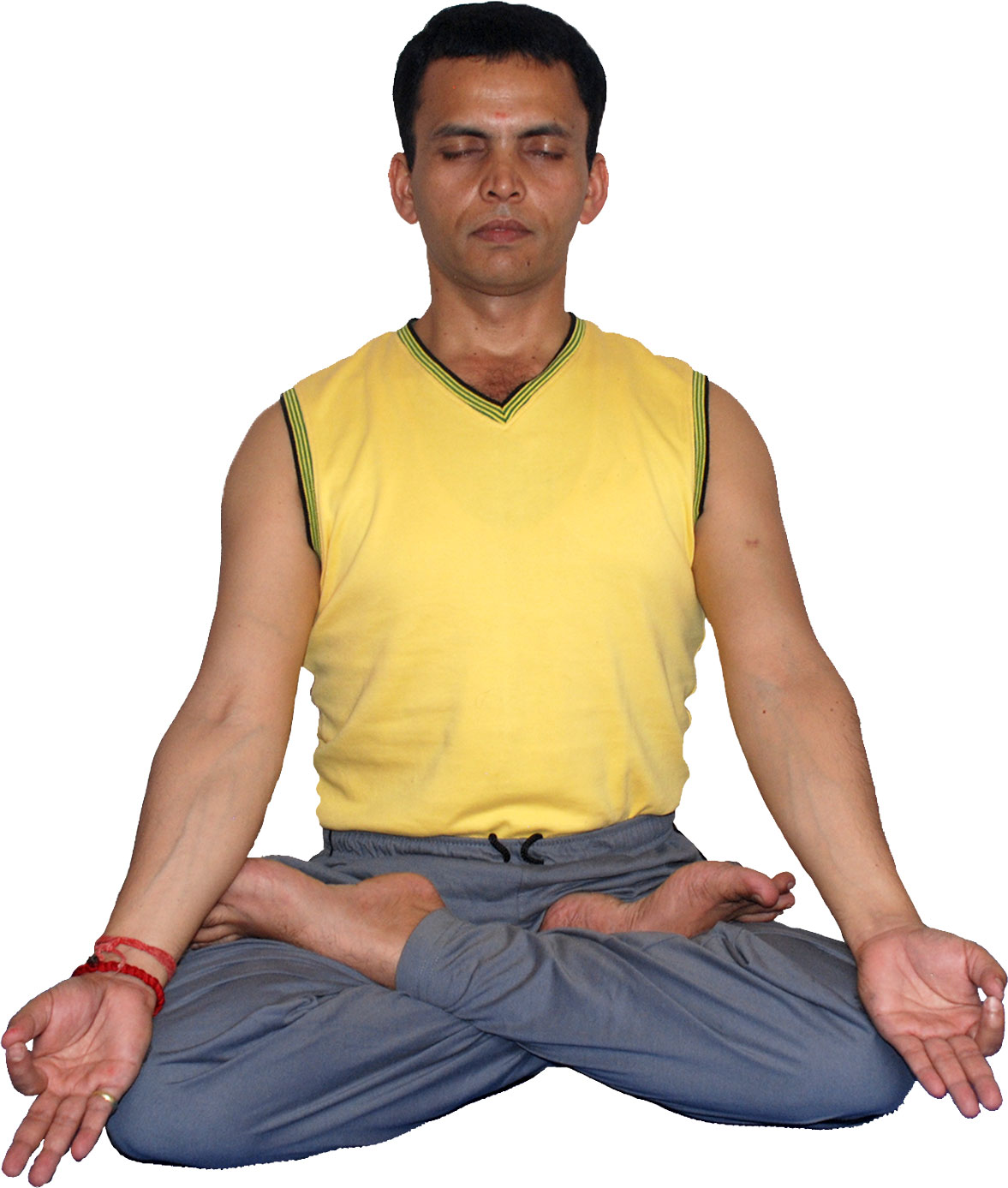
26 Feb 2020 HYN Himalayan Yoga Academy
Padmasana is a Dhyanatmak Asana (Meditated Asana) done in a sitting position, highly recommended for meditation. This pose, called Padmasana, is an intermediate to advanced pose that requires a great deal of flexibility in the knees and hips. As such, practitioners should always warm up their bodies with mobility exercises before practicing this pose. If the top knee does not reach the floor, a blanket or block may be used for support. Beginners may work towards padmasana by first practicing ardha padmasana (half lotus Yoga pose), in which only one foot is placed in the hip crease. Those with injured or weak ankles or knees, sciatica, or severe back pain should avoid practicing padmasana.
Padma = Lotus, asana = posture or pose, or position
Pronounced: Pa-dah-maa-sa-na
This asana gets its name from the Sanskrit language and is a combination of two words, padma which means lotus and asana which means yoga posture. This lotus pose is basically a cross legged yoga asana which helps in deepening a meditative state. Practicing this posture activates the internal organs of Abdominal and Pelvic cavity, alleviates many physical ailments, calms the mind and promotes the concentration.
Health Benefits of Padmasana (Lotus Pose)
- Opens up the hips.
- Stretches the ankles and knees.
- empowers the brain.
- Increases awareness and attentiveness.
- Keeps the spine straight.
- Helps develop good posture.
- Eases menstrual discomfort, digestive disorders, and sciatica.
- It Helps keeps joints and ligaments flexible.
- Increase the blood circulation in the lower belt of the human body.
- Activates the Mooladhaara, Svadhistana, and Manipura Chakras.
- Increases the concentration by single point gravity.
How to do Padmasana (Lotus Position)
- Sit on the floor or on a mat with legs stretched out in front of you while keeping the spine erect.
- Bend the left knee and place it on the right thigh. Make sure that the sole of the feet points upward and the heel is close to the abdomen.
- Now, repeat the same step with the other leg.
- With both legs crossed and feet placed on opposite thighs, place your hands on the knees in the mudra position.
- Keep the head straight and the spine erect.
- Hold and continue with gentle, long breaths in and out.
Mudras for Padmasana (Lotus Position)
Mudras stimulate the flow of energy in the body and can have amazing effects when practiced with this pose. Every mudra differs from each other, and so do their benefits. When sitting in Padmasana, you can deepen your meditation by incorporating either Chin mudra, Chinmayi mudra, Bhairaba Mudra, Adi mudra, or Bhrama mudra, Mudras of elements, and mudra of Prana as well. Breathe for a few minutes while in the mudra and observe the flow of energy in the body.
Pre-asanas: Half butterfly, Baby Rock, Butterfly, Swastikasana, Half- lotus
Padmasana (Lotus Pose) for Beginners
If you have a problem overlapping both your legs and sitting in Padmasana, you may also sit in Ardha-Padmasana (Half-Lotus pose) by placing one leg on the opposite thigh. Continue doing so till you feel flexible enough to progress to Padmasana.
Precautions or limitations of Padmasana (Lotus pose)
1) If you have weak or injured knees avoid doing this posture as it places lots of strain on the knees.
2) Avoid if you have a fracture and a current operation in parts of the legs, just a few months ago.
3) If you suffer from sciatica, it is preferable not to attempt this yoga posture.
4) In the case of ankle injury, do not practice this posture.
